Creating a comfy and efficient desk setup is a common goal, but it’s easy to make mistakes that can mess up your ideal workspace. In this guide, we’ll look at 10 common pitfalls and how avoiding them can result in a more comfortable and productive work or study environment.
Full Disclaimer: We are an office furniture dealer and sell some of the products we review. To learn more about the products we sell, our review process and why you can trust us, please visit: Why we’re different. Who is BTOD.com and The Breakroom Blog?
10 Errors Destroying Comfort Links
- Remaining in a Static Position for Extended Periods
- Using a Desk with Inappropriate Height
- Using an Uncomfortable, Budget Mouse
- Sticking to a Kitchen Chair or Table
- Neglecting a Footrest
- Incorrect Monitor Placement
- Slouching in Your Chair
- Neglecting Breaks During Prolonged Work Sessions
- Expecting Budget Chairs to Match Premium Comfort
- Working in Poorly Lit Environments
1. Remaining in a Static Position for Extended Periods
We’ve all fallen prey to this, spending hours on end confined to our chairs, engrossed in our work. If you’re like me, sitting for 12-14 hours at a stretch, you’re probably all too familiar with the monotony of desk-bound tasks.
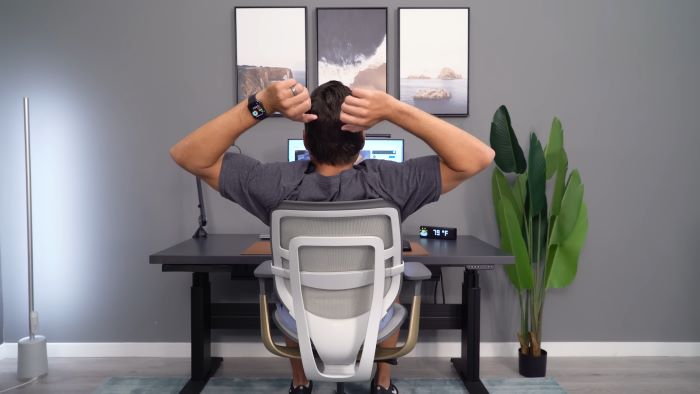
Break free from the rut by trying dynamic sitting. Shift your position regularly—lean back, sit forward, cross and uncross your legs. These subtle movements prevent stiffness. Add quick chair-based stretches, like arm, shoulder, and neck stretches, to alleviate tension from prolonged stillness.
2. Using a Desk with Inappropriate Height
Standard desks rarely fit your body perfectly, as they typically adhere to a height standard of 29-30″. This leaves only a fraction of people truly comfortable. If you’re shorter, you may strain to reach your keyboard and mouse, leading to trouble for your wrists, neck, shoulders, and back.
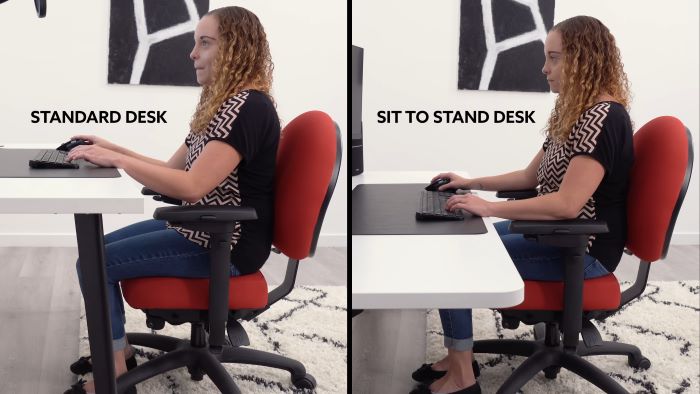
Opting for a sit-to-stand or standing desk is a potential solution. These desks not only support standing but can often be lowered below the conventional desk height, catering to individual needs. Even at 6′ tall, I find a desk height of 27 to 27.5″ suits me best.
3. Using an Uncomfortable, Budget Mouse
Perhaps you’ve yet to make the switch, much like my journey from cheap Logitech mice after 15 long years. Persisting with a poorly designed, small mouse can lead to hand and wrist discomfort over prolonged periods.
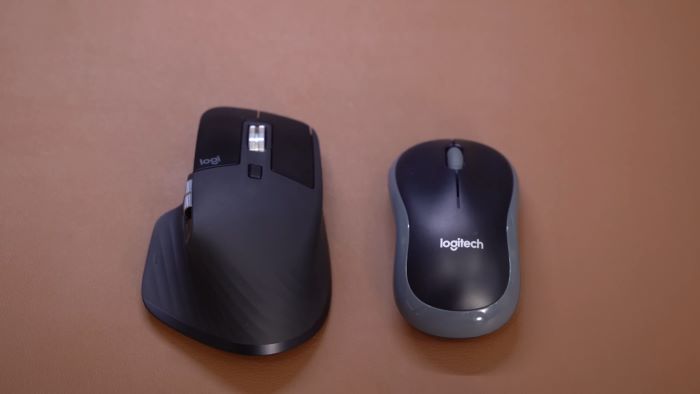
Switching to the MX Master Mouse brought quick relief. Its ergonomic design significantly improved wrist and hand support compared to my previous mouse. While getting a Logitech MX Master Mouse isn’t necessary, choosing a mouse that suits your hand size and supports your wrist is crucial.
4. Sticking to a Kitchen Chair or Table
Upgrade your workspace chair if you’re still using a kitchen or folding chair. Chairs like the Ticova Ergonomic in the $150-$200 range can be transformative. Lets face it: kitchen chairs are designed for short-term sitting and can be stiff and uncomfortable. Prolonged use may lead to tailbone issues and reinforce unhealthy sitting habits.

5. Neglecting a Footrest
Regardless of your height, adding a footrest can improve your setup. For shorter individuals, a footrest aligns the chair and desk better by elevating the floor height. Taller individuals benefit from footrests as they encourage movement and offer a comfortable spot to rest their feet—an active alternative to keeping them sedentary.

With 15 years of personal experience, I’ve explored various footrest models, and my preference leans towards options like the Everlasting Comfort. I like this option because of its squishy comfort and versatile design, providing a supportive and adaptable solution for extended periods of use.
6. Incorrect Monitor Placement
Proper monitor positioning is important for neck and back comfort, but not all monitors have height adjustments or enough range for optimal alignment. Choosing a monitor with adjustable features can greatly improve your setup and reduce strain on your neck and back.
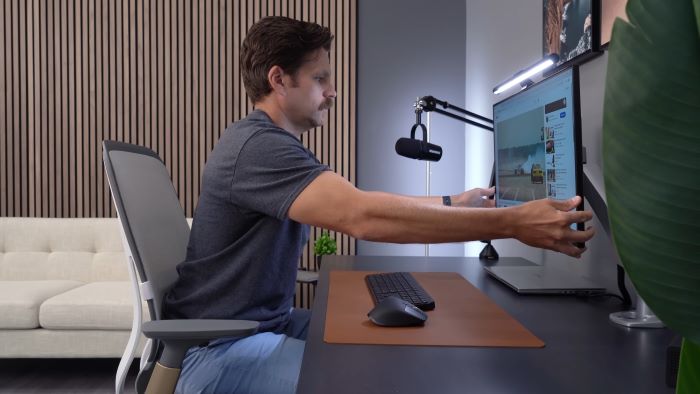
Ideally, your monitor’s top edge should be at or just below eye level. This positioning minimizes the need to look upward. Sitting an arm’s length away from the screen is usually suitable, provided the monitor’s size is compatible.
7. Slouching in Your Chair
For a long time, slouching has been a common posture, usually resulting from the challenge of staying comfortable during extended sitting. However, setting up your chair correctly is crucial in avoiding this issue.
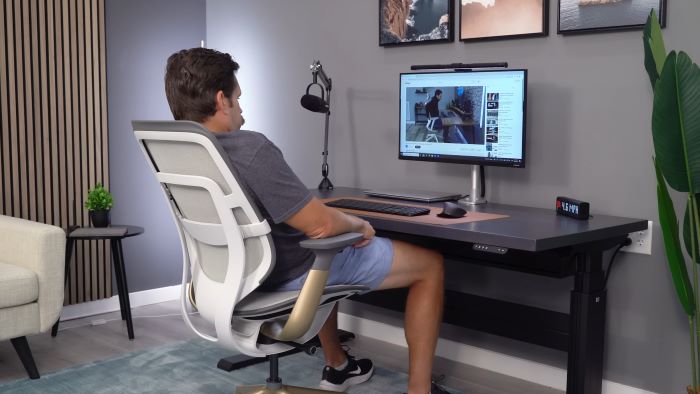
Ensuring you sit fully against the chair’s backrest is a starting point. Maintain a neutral spine position—refrain from hunching shoulders or excessively arching your lower back. Ignoring this may lead to persistent discomfort and slouching.
8. Neglecting Breaks During Prolonged Work Sessions
We’re all guilty of this—losing track of time while deeply engaged in work or gaming. Those extended hours without a break not only affect productivity but also take a toll on overall well-being. It’s essential to recognize the importance of regular breaks to maintain that healthy balance.
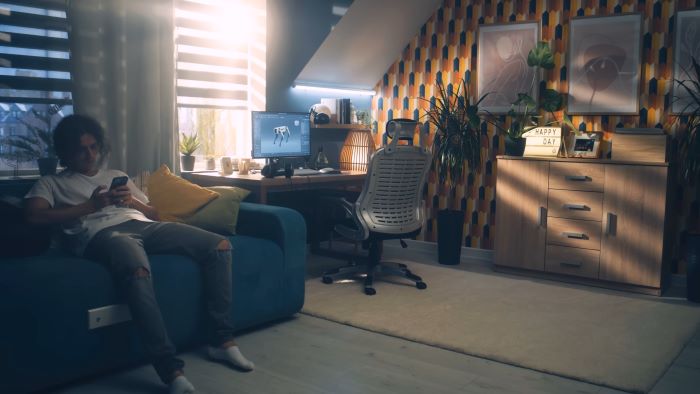
While dynamic sitting and minor stretches help, regular breaks involving movement around your environment are crucial. Using a smaller glass for water intake can encourage more breaks, as refills necessitate rising from your desk. Short walks during the day provide screen respite and mental refreshment.
9. Expecting Budget Chairs to Match Premium Comfort
In the realm of office chairs, there’s a constant quest for recommendations, especially for sub-$100 and $200 options. While these budget chairs outperform kitchen chairs, they rarely offer the comfort and support needed for extended sitting.
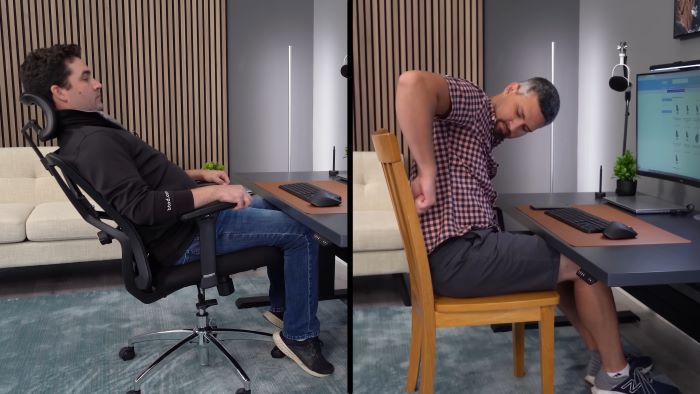
Chairs like the Vera and Soji, priced between $400 and $600, strike a balance between affordability and high-end features found in $1500+ counterparts. It’s essential to recognize that cheap chairs come with limited durability and often subpar customer service.
10. Working in Poorly Lit Environments
Dim lighting causing blindness is a myth, but inadequate lighting can lead to discomfort, headaches, and decreased productivity. For late-night or dim environment work, adding ambient lighting behind the monitor is beneficial.
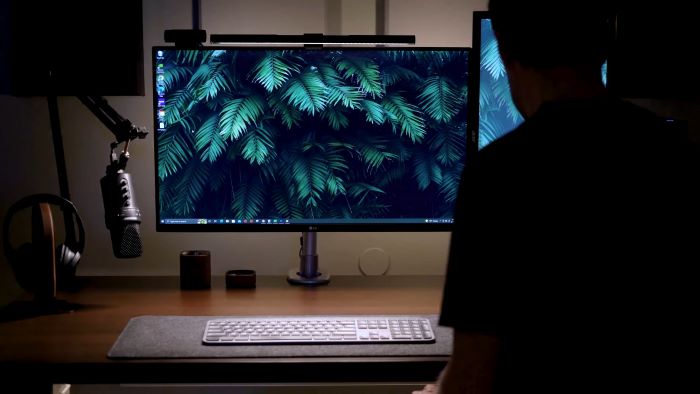
Proper desk surface lighting is equally crucial; task lamps or monitor light bars can be employed to alleviate eye strain by focusing light where needed. These lighting solutions not only help visibility but also contribute to creating a well-lit and comfortable workspace.
Bottom Line
Ultimately, avoiding these common mistakes is important for achieving a more comfortable desk setup. By recognizing and addressing these issues you can transform your workspace to be more ergonomic. Your body will thank you for creating such a place that supports both focus and relaxation.




